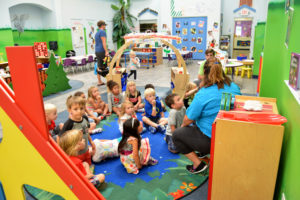From the earliest days of human communication, storytelling has been a powerful tool for everything from preserving family history to group entertainment and self expression.
Did you know that storytelling activates strategic parts of your brain?

According to a 2014 study from Claremont Graduate University, published in conjunction with Harvard, “character-driven stories do consistently cause oxytocin synthesis.”*
Oxytocin is important because it stimulates emotions like happiness and empathy.
There are a few criteria:
We discovered that, in order to motivate a desire to help others, a story must first sustain attention – a scarce resource in the brain – by developing tension during the narrative. If the story is able to create that tension then it is likely that attentive viewers/listeners will come to share the emotions of the characters in it, and after it ends, likely to continue mimicking the feelings and behaviors of those characters. This explains the feeling of dominance you have after James Bond saves the world, and your motivation to work out after watching the Spartans fight in 300.*
Neuroscientist Uri Hasson from Princeton University, amplifies the power of storytelling in his 2016 Ted Talk** by describing how multiple people listening to the same story become “synced” in their brain activity.
We would conclude then that there are a few especially powerful forms that storytelling can take to initiate powerful brain-boosting moments for your young learner
1 – The Right Kind of Story
The study published in the HBR details oxytocin production and stipulates that a story should be character driven. Stories that tell tales of heroes, villains, overcoming, and virtue are especially vital and can be found at every reading level!
2 – Group Stories
Giving your child the opportunity to experience storytelling with a group of children can promote the kind of shared experience Uri Hasson describes and help them with crucial social-emotional development. We practice this kind of reading every day during Circle Time and other Literature Moments sprinkled throughout the schedule in each Creative World classroom.
Any way you slice it, stories are powerful! Fill your child’s imagination with heroes, heroines, and magic by sharing stories every day.
*http://www.cavill.com.au/wp-content/uploads/2016/08/HBR-2014-Why-your-brain-loves-good-storytelling.pdf **http://blog.ted.com/what-happens-in-the-brain-when-we-hear-stories-uri-hasson-at-ted2016/
